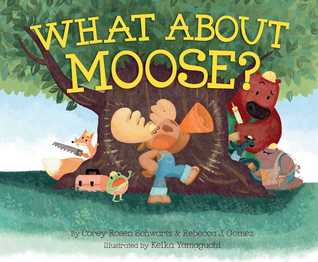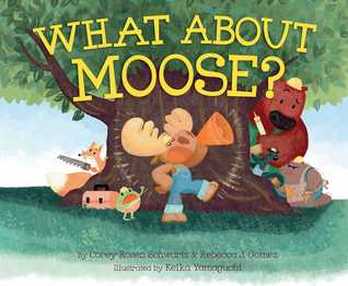Read to your children. Why? Because… Effective teachers of reading know that encouraging their students to read trade books, both in and out of school, is the best way to bolster their students’ vocabulary. As books are rich in academic words, the extended reading of trade books not only increases vocabulary in terms of quantity, but it also enhances vocabulary in terms of quality. “Written language, including the language found in children’s books, is far more sophisticated and complex than is spoken language, even that of college educated adults” (Cunningham & Zibulsky, 2013; Allington, 2012; Hayes, 1988). Compared to written language, spoken language is “lexically impoverished.” The amount of students’ reading is strongly related to their vocabulary knowledge. Students learn new words by encountering them in text, either through their own reading or by being read to. Increasing the opportunities for such encounters improves students’ vocabulary knowledge, which in turn improves their ability to read more complex text. “In short, the single most important thing you can do to improve students’ vocabulary is to get them to read more.” (Texas Reading Initiative, 2002). Three Tiers of Vocabulary Educator and author of Bringing Words to Life, Isabel Beck, has categorized all words into three tiers. Tier I -Most basic words -Rarely require instruction in school -Examples: clock, baby, happy Tier II -Words that are high frequency for mature language users and are found across a variety of domains -Not so common in everyday language -Instruction adds productivity to an individual’s ability -Examples: coincidence, absurd, industrious Tier III -Words whose frequency of use is quite low and is often limited to specific domains -Best learned when needed in a content area -Examples: isotope, lathe, peninsula Therefore, when teaching vocabulary, it makes the most sense to teach Tier II words. So what does this mean for writers? It means that educators specifically choose well-written picture books that contain tier II vocabulary words. It means that writers should be aware of this and not shy away from such vocabulary words when writing. Often, I hear writers discussing using “higher level” vocabulary words in picture books. And whether it's appropriate or not. But they typically clump together tier II and tier III words together as this "higher level vocabulary." However falling into this assumption will cause writers to fill picture books with inappropriate “higher level” vocabulary that will make the picture book inaccessible for young readers. Knowing the difference between the tiers and having an understanding of effectively using tier II words will make a picture book reach a much wider audience. Is there a list of all tier II words? No. (Not that I know of.) Because the list would be way too large. However, even within tier II words, writers and educators can choose the “best” tier II words to use for instruction. For example think about this: -Is the word interesting? Useful? Will it be in other texts? -Can you define the word using vocabulary the student will understand? -Will the word help with the major understanding of the selection?
This book has it all!
-Flawed, yet likable character. -Strong character want and problem. -Clever, original rhyme. -A never stumbling, perfect meter. -(I hate using LOL, but the humor in this book is literally the laugh out loud kind.) -Perfect pacing. -Satisfying ending. -And for a book that is geared toward a younger audience, the use of vocabulary will make your four year old smarter (as well as your ten year old.) Check out some of the stunning vocabulary used in this amazing picture book: divvied trotted announced caution commands crank pace concern overseeing stern jotted imperfections careful inspections spouted advice precise glare tromping mumbled dictator manned clambered complete hefted surrounded hollered muffled hopeless groaned grumbled huddled plotting What About Moose? Well, it’s simply splendid, engaging, and full of stunning vocabulary!
Jennifer DuBose
8/9/2015 09:26:44 pm
Excellent post! First time I've read a clear extrapolation of what makes great / appropriately challenging words (i.e. coincidence but not isotope, unless it's a science text). Yay! Thank you :)
Mandy
8/9/2015 09:34:42 pm
Thanks Jennifer! 8/10/2015 03:48:06 am
Thank you, Mandy, for writing about a subject that keeps us dancing around the vocabulary pole.
Mandy
8/11/2015 09:50:33 pm
Thanks for being a faithful reader and blog follower Charlotte! 8/12/2015 08:26:15 am
I just shared this on Facebook, Mandy. I am so invested in helping young children build their vocabularies. And what better way than to dish it up in a fun picture book where illustrations/rhyme/sentence context can help them grasp the meanings.
Mandy
8/17/2015 09:35:32 am
Thanks Vivian!!!
Mandy
8/17/2015 09:34:40 am
Thanks Rebecca! Moose is awesome.
Deb Bartsch
8/16/2015 11:59:32 pm
Thank you for this great post ! And a perfect explanation of appropriate vocabulary use for our writing manuscripts.
Mandy
8/17/2015 09:31:51 am
Thanks Deb! 8/17/2015 03:38:11 am
This was a great article, but in all of that IMPROVE COMPREHENSION talk I hope that we don't lose sight of the REAL reason that vocabulary strength is such an important goal.
mandy
8/17/2015 09:31:11 am
Absolutely! Totally agree. :) 8/30/2015 01:56:20 am
Mandy- thank you. This is such an important post - I think so many people underestimate what young kids can understand, and what better way to introduce more complex vocabulary than through their first books.
Mandy
8/31/2015 11:51:05 am
Glad you enjoyed it Sylvia. And thanks for sharing it on KidLit 411. :)
sally suehler
8/30/2015 03:43:57 am
We talk about not talking down to kids in our writing, but we usually refer to the content, not the vocabulary. If kids are exposed they will soak it all up. We just need to expose them. Need to go out and add this book to my collection. Thank you @Mandy!
Mandy
8/30/2015 11:06:41 am
You're welcome Sally!
jean
4/20/2016 02:05:35 pm
what are two books that promote richness of language for toddlers Comments are closed.
|
We are so excited to be mixing things up at CBA, beginning with some delicious additions to the Blogfish. Meet our awesome bloggers!!
Here's our lineup: 1st Mondays begin with former school psychologist Dr. Debra Collins who will be writing about Social emotional Learning in kidlit and behind the scenes as well as Jewish children's books. 2nd Mondays will feature super smart Melissa Stoller whose career is taking off with several new books. 3rd Mondays will feature our new blogger coming soon. 4th Mondays features new blogger, the fabulous Brentom Jackson, who has a beautiful approach to blogging. And 5th Mondays we'll be taking a break Archives
July 2024
|
|
Discover
|
About Us
|
Join Us
Join our Community and receive a fabulous free gift, KidLit tips, newsletters, scholarship info, contests, and more!
Join our KidLit Mentorship |
Social Media
Interact with our FaceBook Group or follow us on:
|
© 2010-2024 All content on this website is copyrighted. Sorry, all courses are non-refundable.


 RSS Feed
RSS Feed
